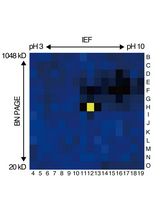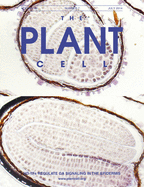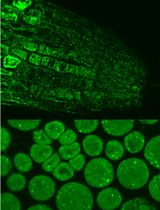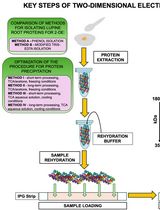- EN - English
- CN - 中文
Expression, Purification and in vitro Enzyme Activity Assay of Plant Derived GTPase
植物源GTP酶的表达、纯化和体外酶活性的测定
发布: 2015年11月20日第5卷第22期 DOI: 10.21769/BioProtoc.1651 浏览次数: 10733
评审: Ru ZhangAnonymous reviewer(s)

相关实验方案

基于活性蛋白质组学和二维聚丙烯酰胺凝胶电泳(2D-PAGE)鉴定拟南芥细胞间隙液中的靶蛋白酶
Sayaka Matsui and Yoshikatsu Matsubayashi
2025年03月05日 1867 阅读
Abstract
Based on gene expression data after biotic stress, the GTPase RabA4c has been suggested to regulate pathogen-induced callose biosynthesis in the model organism Arabidopsis thaliana. We studied the function of RabA4c in its native and dominant negative (dn) isoform. In planta, RabA4c overexpression prevented penetration of the virulent powdery mildew Golovinomyces cichoracearum into epidermal leaf cells. This penetration resistance was caused by enhanced callose deposition at sites of attempted fungal penetration at early time points of infection. By contrast, RabA4c (dn) overexpression did not increase callose deposition or penetration resistance.
In this protocol, we describe the expression, purification and activity assay of the heterologously expressed GTPase RabA4c from A. thaliana based on the publication Ellinger et al. (2014). We fused RabA4c to the fluorophore mCitrine and expressed this protein in the yeast strain Pichia pastoris GS115. For purification of RabA4c, we used the GFP-Trap_A kit (Chromo Tek) which specifically binds to GFP derivatives like mCitrine. The enzyme activity assay was done by using the GTPase Assay Kit from Innova Biosciences. In general, we followed the instructions made by the manufacturers.
Materials and Reagents
- Protein expression
- pGAPZ A, B, & C Pichia pastoris Expression Vectors (Life Technologies, catalog number: V200-20 )
Note: Currently, it is “Thermo Fisher Scientific, InvitrogenTM, catalog number: V200-20”. - ZeocinTM (InvivoGen, catalog number: ant-zn-5b ) for selection
- 1 % yeast extract (Carl Roth GmbH + Co., catalog number: 2363.3 )
- 2 % peptone (BD, catalog number: 211677 )
- D(+)-Glucose (Carl Roth GmbH + Co., catalog number: X997.3 )
- Yeast Peptone Dextrose (YPD) media (see Recipes)
- pGAPZ A, B, & C Pichia pastoris Expression Vectors (Life Technologies, catalog number: V200-20 )
- Protein purification
- Acid washed glass beads (Sigma-Aldrich, catalog number: G 8772 )
- GFP-Trap® (ChromoTek GmbH, catalog number: gta-20 )
- NanoOrange Protein Quantification Kit (Invitrogen, catalog number: N-6666 )
Note: Currently, it is “Thermo Fisher Scientific, Molecular ProbesTM, catalog number: N-6666”. - 10 mM Tris (pH 7.5)
- 50 mM NaCl
- 0.5 mM EDTA (pH 8.0)
- 100 mM Glycine (pH 2.5)
- 1 M Tris (pH 10.4)
- Dilution buffer (see Recipes)
- Wash buffer I (see Recipes)
- Wash buffer II (see Recipes)
- Elution buffer (see Recipes)
- Acid washed glass beads (Sigma-Aldrich, catalog number: G 8772 )
- GTPase activity assay
- GTPase Assay Kit (Innova Biosciences Ltd., catalog number: 602-0121 )
- Negative control: expressed and purified GFP using P. pastoris as expression system (plasmid pGAPZ::eGFP)
- GTPase Assay Kit (Innova Biosciences Ltd., catalog number: 602-0121 )
Equipment
- 300 ml flasks
- Shaker (160 rpm)
- Centrifuge for 50 ml Falcon tubes (3,220 x g)
- Vortex
- Tube rotator at 4 °C and room temperature
- Plate Reader (BioTek Instruments, model: Synergy HTX Multi-Mode Reader)
- Tabletop centrifuge (cooling)
Procedure
文章信息
版权信息
© 2015 The Authors; exclusive licensee Bio-protocol LLC.
如何引用
Glöckner, A. and Voigt, C. A. (2015). Expression, Purification and in vitro Enzyme Activity Assay of Plant Derived GTPase. Bio-protocol 5(22): e1651. DOI: 10.21769/BioProtoc.1651.
分类
植物科学 > 植物生物化学 > 蛋白质 > 活性
植物科学 > 植物生物化学 > 蛋白质 > 分离和纯化
您对这篇实验方法有问题吗?
在此处发布您的问题,我们将邀请本文作者来回答。同时,我们会将您的问题发布到Bio-protocol Exchange,以便寻求社区成员的帮助。
Share
Bluesky
X
Copy link










